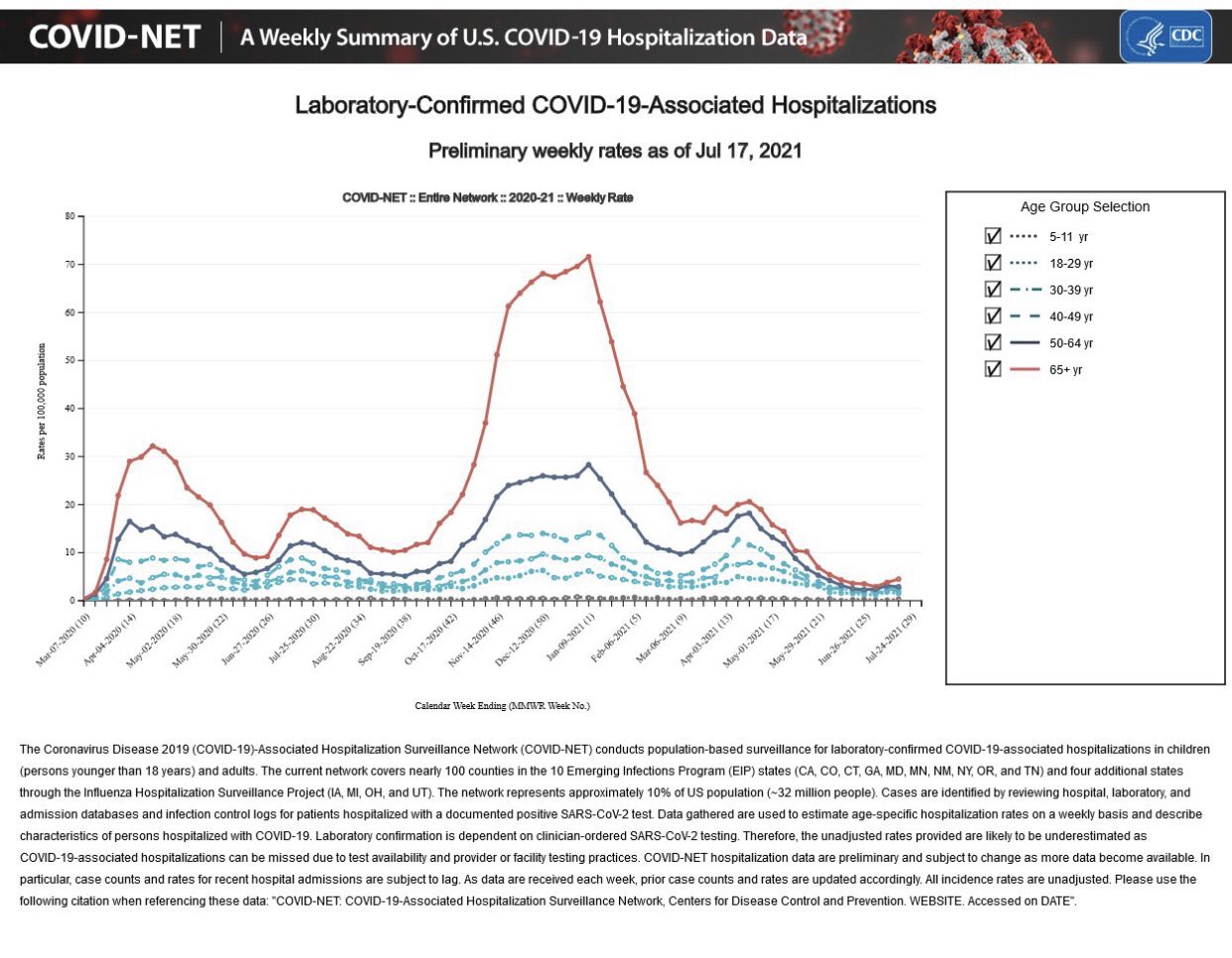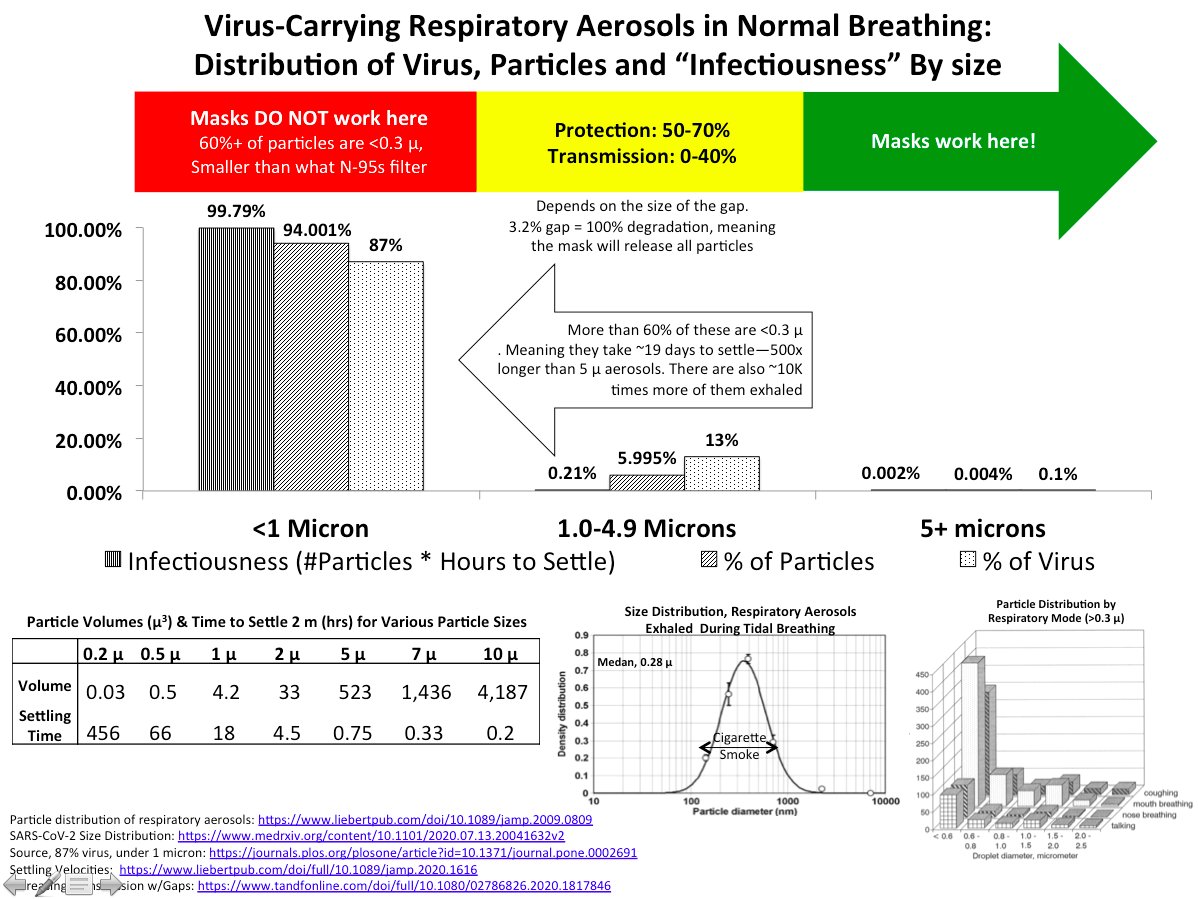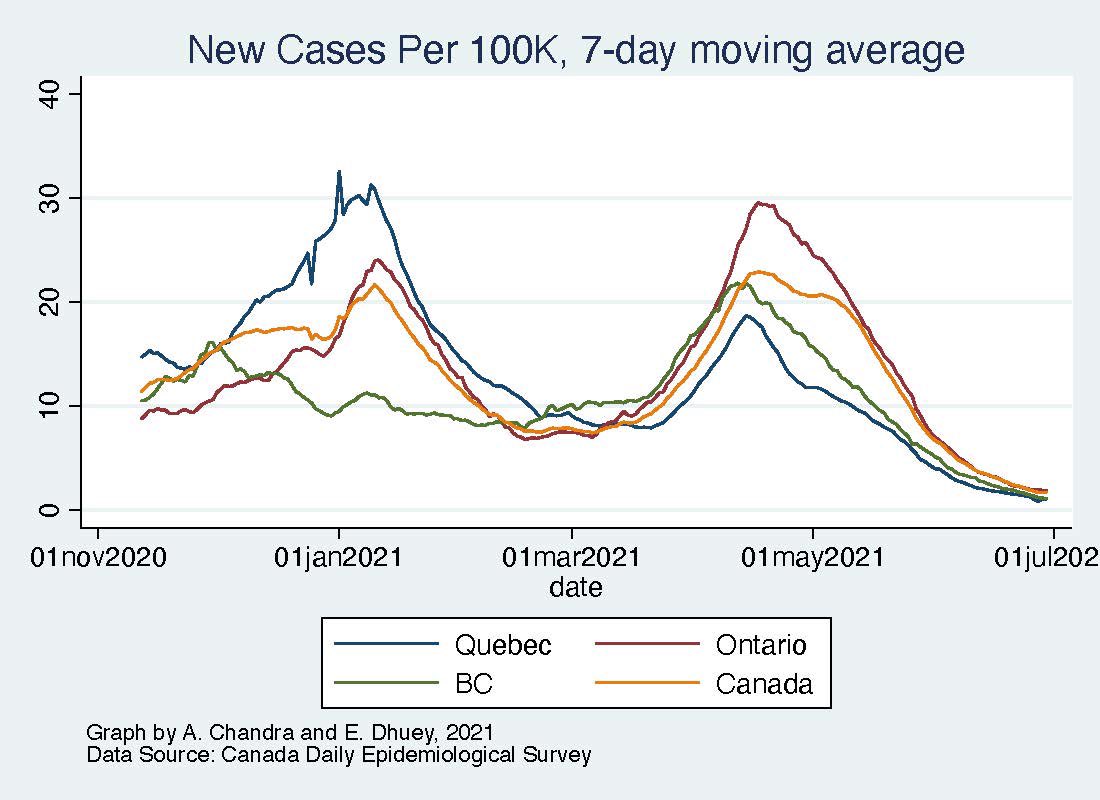UPDATE, September 4 2021: Since the original date of this post, several pieces have come out arguing the same. I’d recommend The Downsides of Masking Young Students Are Real by Dr. Vinay Prasad, and The Science of Masking Kids at School Remains Unclear, which appeared in New York Magazine. Another polemic that I don’t fully agree with, but which has links to many important studies that we should at least know before deciding where the balance of harm lies, is Masking Children: Tragic, Unscientific and Damaging, from the American Institute for Economic Research. Finally, in the weeks since the publication of this piece, the UK, Ireland, France and Denmark (as well as Sweden of course) have also decided not to mandate masks on younger learners, concluding quite specifically that the balance of harm is in masking, particularly on the youngest learners. The varying approaches between the United States and UK, Ireland, France, Denmark and Sweden should provide yet more empirical comparison. Set yourself a reminder to check on per-capita spread and mortality outcomes for K-12 learners come late November.
On Wednesday, Governor Inslee reiterated his mandate that all K-12 learners, faculty and staff wear masks to start the 2021-2022 school year, regardless of their vaccination status. Further, Inslee provided no threshold, metric or milestone when this requirement would end.
From the ever-drying well, he’s saying once again: “trust us.”
How long will we continue to force the least COVID-vulnerable among us with the least voice to sacrifice big parts of their lives for those with the most choice to change our odds? Seattle’s public schools closed for in-person learning longer in 2020-2021 than any other school system in America, save San Francisco. We need the highest-possible bandwidth of communication between teacher, students and one another to have any hope of making up for a very lost year.
Let’s remember that everyone twelve years old and up has been eligible for free and highly effective vaccines for months. Each member of my own family of five (ages 14-56) has been fully vaccinated since June; we jumped at the opportunity as we each became eligible during the spring. These vaccines greatly limit the risk of hospitalization or mortality.
Yes, there is vaccine hesitancy, and while I’m very supportive of persuasion over shaming, assumption-making and ridicule, I’ve also had it with the suggestion that the rest of society has an obligation to wait for everyone to change their minds.
The two leading teachers unions in America oppose vaccine mandates for their members. OK. I respect personal and organizational choice; that’s entirely their right to do so. But this stance certainly undermines their ability to then claim faculty vulnerability as a key concern. All teachers and staff have the option to get vaccinated. Indeed, after lobbying the governor, they were granted prioritized vaccination status starting in March of 2021, so they’ve had the option far longer than most. There are very rare health conditions where physicians might say that vaccines aren’t a wise choice. The question then: Is the least harm to require all their students in the school to wear a face covering seven hours per day, or might that teacher need reassignment to remote work?
Imposing these new restrictions is analogous to forcing everyone to drive 10mph on the highway because 30% of us refuse to use a seat belt. At some point, leaders need to weigh evidence and relative total harm. A big part of that calculus is looking at relative numbers.
One thing is clear: this mandate is not primarily about minimizing harm to students.
COVID is Extremely Age-Discriminating
Statistically, kids are simply not at significant risk of hospitalization or mortality from COVID, not yet anyway. In fact, they at lower risk from COVID hospitalization or mortality than influenza, by the CDC’s own data, despite CDC Director Rochelle Walensky’s comments yesterday to the contrary. The CDC’s data suggests that kids 0-17 years old are anywhere from two to seven times more likely to die from influenza than COVID. In fact, the age-weighted severity is perhaps the biggest mercy this awful pandemic has brought. Here in America, the youngest among us survive, more than 99.9% of the time.
That doesn’t mean we shouldn’t take COVID risk in schools seriously, but it does mean we need some sense of proportion of the relative harm we are choosing, and yes, masking is harm. Sensible policy weighs the harms imposed with the likelihood and weight of harms forestalled, and chooses the least harm-imposing path.
We are learning about COVID-19 all the time. But one of the few conclusive facts about COVID-19 is that it is extremely age-discriminating when it comes to its worst outcomes: hospitalization and mortality.
Out of 74,000,000 Americans 18 and under, the total number of 0-18 year old Americans who have died of COVID since the pandemic began is 337. According to the CDC, the infection fatality rate for COVID for those 18 and under is astonishingly low; statistically close to zero. While comparisons to the flu are always fraught, it’s worth noting that the infection fatality rate for COVID is anywhere from half to one seventh that of the flu for this 0-18 age bracket.
You can find full hospitalization and mortality data for influenza by age group on the CDC’s website for comparison.
Zooming out, here’s the hospitalization curve, all American age groups since the start of the pandemic. Note the black dotted lines at the very bottom of this chart. It’s hard to spot, since it is literally along the y-axis at zero:

As for “breakthrough infections”, let’s look at the likelihood of severity for the vaccinated. Thus far, there are about 160 million Americans who have been fully vaccinated. And thus far, there are about 6,000 “breakthrough” infections which have led to hospitalization. That means that if you’re vaccinated, there’s about a 0.00375% chance you might be hospitalized due to COVID, based on current statistics. (Again, please get vaccinated if you can!)
Some point to “Long COVID” as a concern that we should guard against. To which I’d first say: what evidence can you show that masking K-12 learners even slows spread and reduces chance in any meaningful way of catching COVID-19? Why haven’t mask mandates “bent the curve”, in state after state when they impose or remove mask mandates?
These aren’t assertions to be made cavalierly; I have spent hours upon hours with 91-DIVOC and other terrific COVID charting sites. For each of the very few cases where you can plausibly point to a mask mandate having “bent the curve” within weeks or months of imposition or relaxation, I guarantee you I can show you three states and situations where no change from prior pattern was observed. Is there a chance that the “virus is gonna virus” folks are actually mostly correct on this issue? Has anyone checked in on Sweden’s overall mortality lately, compared to other European nations? How about those of Florida or Texas?
And what about long literacy? Long impacts from high school dropout? Long language acquisition? Long loss-of-socialization? Long impacts from less physical education? Music? Theatre? We will have interesting empirical testing data between kids raised in each state over the coming decades to compare.
Washington State’s Learners Will Be Uniquely Restricted
Washington State is taking a pretty aggressive stance here, compared to most other states in the union.
The data-collection site burbio.io tracks school mask mandates, along with other metrics. Their latest map shows just how unique Inslee’s position is. Not only is Washington State one of only six states to mandate masks for in-person schooling, the vast majority of states have either no mask mandate or a ban on mask mandates at present writing. Look how green this map is below:

For the lucky 30% who head to college, imagine first-year roommates as they unpack in their dorm, meeting each other for the first time: one from Florida and one from Washington State. How will they describe their high school experiences?
Do we think this will have a positive effect on Washington State students’ learning, attendance rates, drop-out rates and post-secondary next steps? Do we imagine that it will have no effect?
We are Putting Mandates Uniquely On Kids
Even more, this new emphasis on K-12 learning feels uniquely punitive to one age group. Do you see any ways this might backfire?
Inslee recommended, but does not require, masking for adults when out and about.
Let’s say that again. There are no statewide age-dependent mandates for most adults for their daily activities — be it work, or shopping or dining or entertainment. There’s only a recommendation from the Governor that you should wear a mask when indoors or with unvaccinated individuals. Yes, there are workplace restrictions in some areas, but adults still have choices not to work in those roles.
This “mask up in school” requirement applies equally to students and adult staff, but if you’re in the 0-18 year age group, that pickup from school and then errand-running experience is going to seem like entirely separate rules for you versus the adults you see out and about.
Then there’s the matter of cynicism and buy-in to institutions. Do we imagine that teens don’t have access to Google or social media? Clear, peer-reviewed and validated evidence does not exist which shows those school districts which imposed mask mandates did any better than those which did not, certainly not in terms of the outcomes which matter most: hospitalization and mortality.
Follow the Evidence, or Nah?
I am evidence-driven.
If you have been truly evidence-driven from 2015-2021, thank you. You’re a rare bird. You’ve been willing to go with what the evidence says, even if it may be counterintuitive. You’ve been willing to update your prior assumptions, even if it goes against your tribal narrative of the moment.
I certainly believed, a year ago, that mask mandates might slow the spread and were well worth a try. It’s intuitive, after all: COVID is an airborne virus, and it even spreads when you’re asymptomatic. So limiting airflow plausibly would limit negative outcome.
And even despite my acquired skepticism, even to this day, as an adult, I’ll comply with a mask mandate, though now, more begrudgingly than before. But this doesn’t mean I’m comfortable at all with this entirely optional harm being imposed and extended for our youngest without compelling evidence. Doing so not only imposes harm but it erodes trust in our institutions and leaders.
Here is our fully vaccinated Vice President, for instance, saying that if you don’t like wearing a mask, get vaccinated:
Huh? She is vaccinated, yet she’s wearing a mask. Hardly modeling the scientifically clear benefits of getting vaccinated.
To be sure, there are very clear lab experiments performed where aerosol spray is measurably reduced by wearing a mask. Masking clearly reduces large particle aerosol transmission and reception in lab settings. And there are very valid reasons that surgeons wear masks. They do work. I am not saying that masks do not work. What I am saying is far more nuanced.
The strongest study I was able to find — and it’s the only one — took place in Georgia, within a school district (not across multiple districts). It found that imposition of both better ventilation and mask mandates appears correlated with lower spread. But as noted, there are at least four potentially large confounders:
First, many COVID-19 cases were self-reported by staff members and parents or guardians, and prevention strategies reported by administrators or nurses might not reflect day-to-day activities or represent all school classrooms, and did not include an assessment of compliance (e.g., mask use). Second, the study had limited power to detect lower incidence for potentially effective, but less frequently implemented strategies, such as air filtration and purification systems; only 16 schools reported implementing this ventilation improvement. Third, the response rate was low (11.6%), and some participating schools had missing information about ventilation improvements. However, incidence per 500 students was similar between participating (3.08 cases) and nonparticipating (2.90 cases) schools, suggesting any systematic bias might be low. Finally, the data from this cross-sectional study cannot be used to infer causal relationships.
Mask Use and Ventilation Improvements to Reduce COVID-19 Incidence in Elementary Schools — Georgia, November 16–December 11, 2020
Mask efficacy appears to depend highly upon both the type of mask used, the compliance with the mandate in an entire cohort, and the aerosol size in question. Masks in general may work to slow the spread, but has it been clearly demonstrated that in K-12 settings, masks so reduce negative outcomes like hospitalization or mortality that they’re worth the harm imposed? I’m not seeing such evidence.

COVID-19 size distribution is shown in the lower left.
In Theory, Theory is the Same As Practice
Empiricists live by real-world observations. Labs are imperfect representations of the real-world. Fortunately, this past year has seen numerous “A/B” tests of various policies. If masking K-12 learners made substantial differences in outcomes, wouldn’t we have seen it? Wouldn’t we have seen Texas’ COVID case count skyrocket after mask mandates were relaxed? We didn’t.
The highly age-discriminatory nature of the virus suggests that there’s something uniquely better about youths’ ability to process the virus. Therefore, let’s use the data from districts, counties, states, provinces and nations, and explore the question: Did K-12 mask policy impact hospitalization or mortality in that community? It does not appear to have done so, certainly not consistently or predictably.
And though I’ve scoured Semantic Scholar, 91-DIVOC and elsewhere for charts and studies, despite a full year’s worth of real-world policy variance, no one appears to have yet validated that mask mandates for K-12 learners greatly limit community hospitalization or mortality. So what the hell are we doing?
Even in the policy rollouts themselves, the same leaders who declared that the vaccinated can remove their masks aren’t coming forth now with clear and convincing evidence which shows that K-12 masking slowed hospitalization or mortality. Some among us conclude: because it doesn’t exist.
In other words: In theory, theory is the same as practice. But in practice, it never is.
Vaccines Work. Why Don’t We Let Them?
The evidence establishing the effectiveness of US-approved vaccines is overwhelming. Vaccines work. They have dramatically reduced the worst COVID outcomes, especially for adults. Please get vaccinated if you haven’t.
But I have searched and searched for data supporting the effectiveness of masking for K-12 learners, and have yet to discover any cross-regional correlations which show that K-12 masking reduces hospitalization or mortality in the surrounding community.
I have however run across numerous intriguing datasets which run counter to data-free claims of effectiveness of this policy. Let’s look at Canada, for instance.
Four Provinces, Four Policies
Canada’s four largest provinces took very different approaches to masking. Take a close look at the chart below. Can you spot a clear difference in negative outcomes? Are the patterns wildly different? Is the area under the curve?
One kept schools open, no masks. One kept schools open, with masks. One closed schools entirely. Can anyone tell them apart in this graph? If you think you can, venture a guess which one was most restrictive.

Answer key: Quebec dropped masks in June. British Columbia mostly never required them, but then did starting in the Spring for grades 4+. Ontario was most restrictive throughout, using remote schooling for much of the 2020-2021 schoolyear, but masking when any in-person learning happened in most public schools.
You can do this same experiment comparing Florida (no mask mandate) to Texas (dropped the mask mandate in March) to even Sweden (no mask mandate.) Generally, it’s not been obvious that the more restrictive the mandate regime results in the least harm overall.
Those urging the imposition of masks often push back that masks cause harm. They’re really no big deal. What’s the downside?
Yes, It’s Harm We are Imposing On Our Kids.
First, several psychologists do hold that masks inhibit language acquisition, particularly for those with learning disability. Reading lips is harder, watching how to pronounce phonemes is harder, and emotional conveyance is restricted.
Read: How masks could affect speech and language development in children | CBC News.
There’s a rather loud contingent on Twitter (often voiced by those affiliated with teachers unions) who try to muster the argument that masking isn’t harmful to learners. Yet the same people who say it imposes no harm then say the quiet part out loud:
So in other words, masks impose no harm or burden on kids, but masks also greatly limit social connection for kids and constantly reinforce there’s something to fear. OK.
Let’s be honest. No one wants to wear a mask. What do we call mandating something upon another human when they do not want to do it? How often are kids’ masks washed? Have you smelled your students’ mask recently?
Though harm imposed by seven hours per day of masking seems minimal to many, this harm is very high to some, particularly earliest learners, those with learning disabilities, social extroverts, and more.
[Full disclosure: my fourteen year old daughter, though fully vaccinated, willingly complies with masking. She’s a bright and mature learner. Since she has no choice in the matter, I’m not attempting to change her mind, given the alternative, and I don’t want to contradict what will certainly be the school’s own guidance, though I am sharing my opinion with leadership.]
Masking adds friction to social connection. Laughter. Language acquisition. Bonding. Enjoyment of learning. Social signals. These kids endured a full year of remote schooling and masking. How much do we care how well they connect with others? Shouldn’t the data that this harm is worth it be crystal clear?
These kids have endured a full year of low-bandwidth, low-touch, low-connection schooling. We need the highest possible bandwidth communication to have any chance of making up for the many losses endured in the 2020-2021 school year.
Some psychologists estimate that up to 70% of communication is nonverbal. I do not see ANY COMPELLING EVIDENCE which says that they, uniquely, should have a mandate and mask up for 6+ hours every day, but we in the outside world should not.
Separate Rules for Adults and K-12 Learners Will Breed Resentment
I don’t think leaders quite realize the buzzsaw they are walking into. Telling the public that once vaccinated, you can remove your mask, but even if you are vaccinated and/or are in the least vulnerable group, you still have to wear one, will not go well. Students and parents alike have access to Google. The studies just don’t exist which clearly demonstrate mask efficacy at reducing hospitalization or mortality in K-12 environments.
If this is about reducing spread, at least have the courtesy to show that masking K-12 learners reduces spread, because you’re imposing harm. Or if this isn’t about kids at all, but somehow about protecting those who choose to remain unvaccinated, I’d challenge you to show your moral calculus that says that imposing harm on the least vulnerable is the right moral tradeoff.
We adults can go out. We can go to bars. Go to restaurants. We can and should get vaccinated to dramatically reduce our chances of the worst outcomes.
Yet they have to mask up in schools. What kind of leaders continue to insist that the LEAST vulnerable to COVID among us need to continue to make sacrifices for others? Why are we working so hard to portray children as vectors of a virus we have effective vaccines for?
As with the CDC guidance about school “reopening” in January, I suspect we will discover that teachers unions had a very big part in this entirely unscientific new mandate now being handed down. Where is the evidence? Have we all just given up on the whole “follow the science” stuff?
Vaccines… immunize. Let’s let them.
DISCLAIMER
I am not a physician. I’m not a scientist, nor do I have medical training. I’m simply interpreting the facts as I see them, linking to credible sources to back up my viewpoints. “Minimal risk” is still risk. You may view tradeoffs differently. The opinions posted here are my own.

